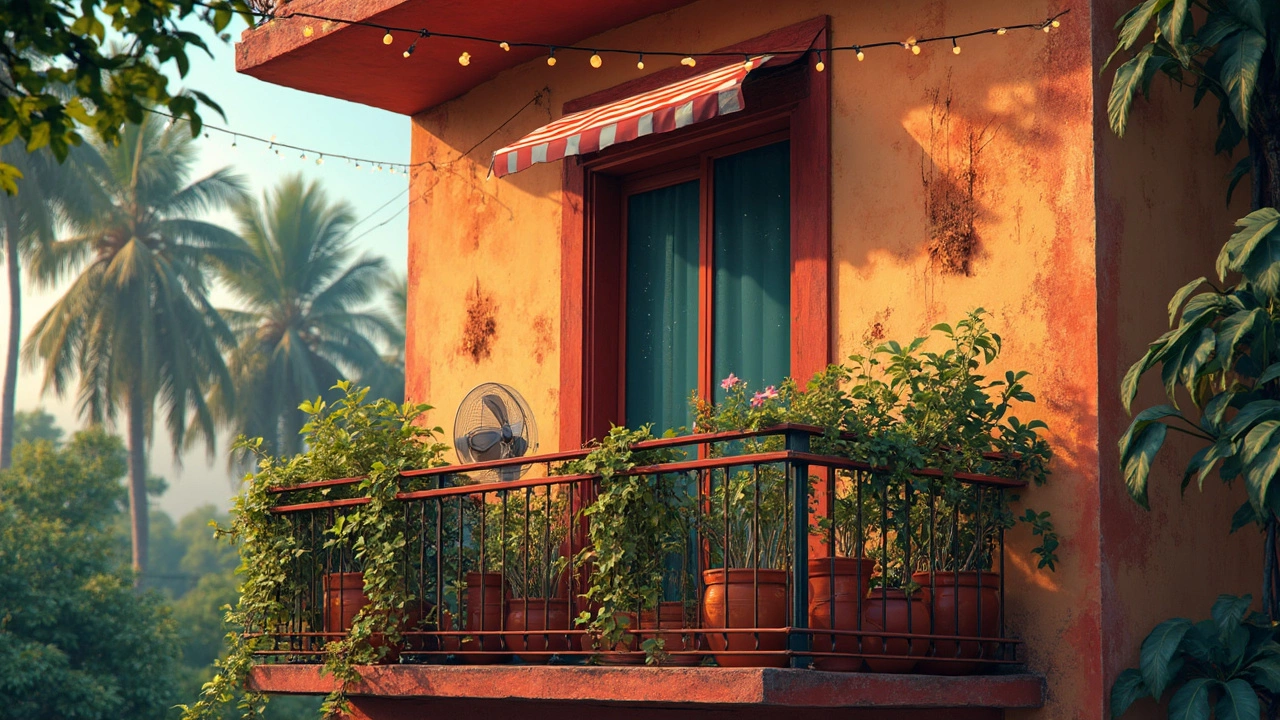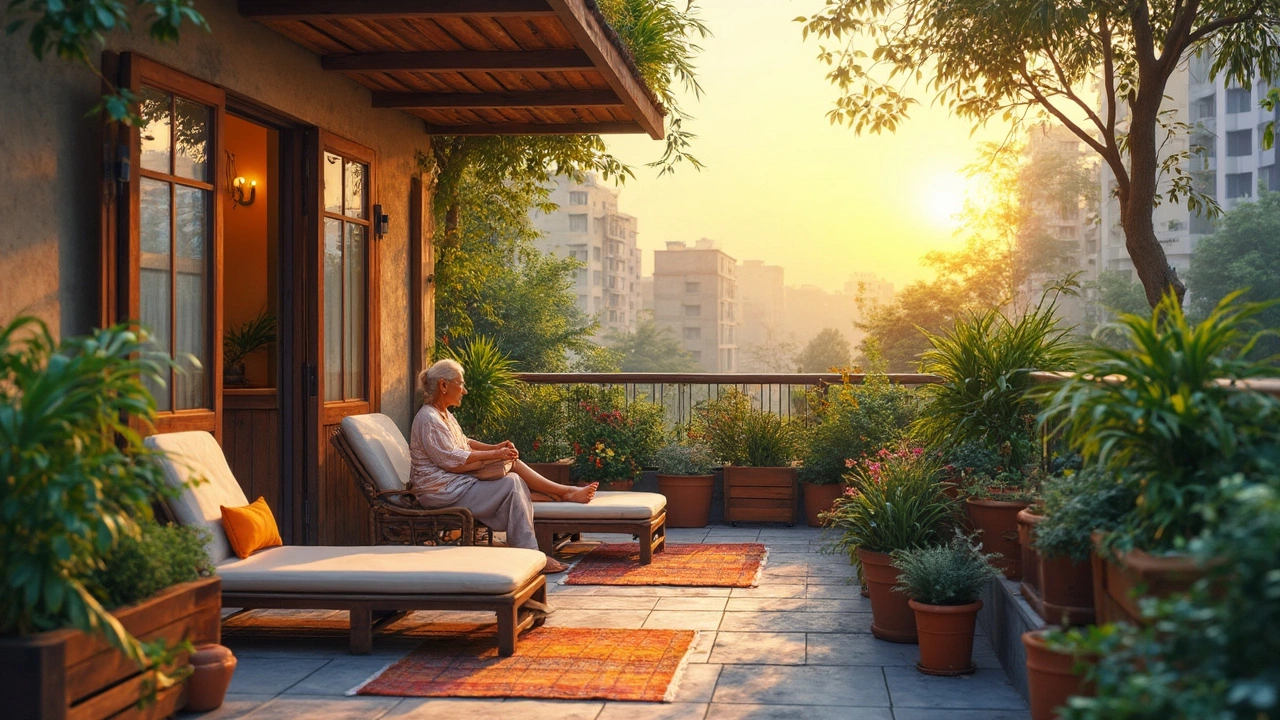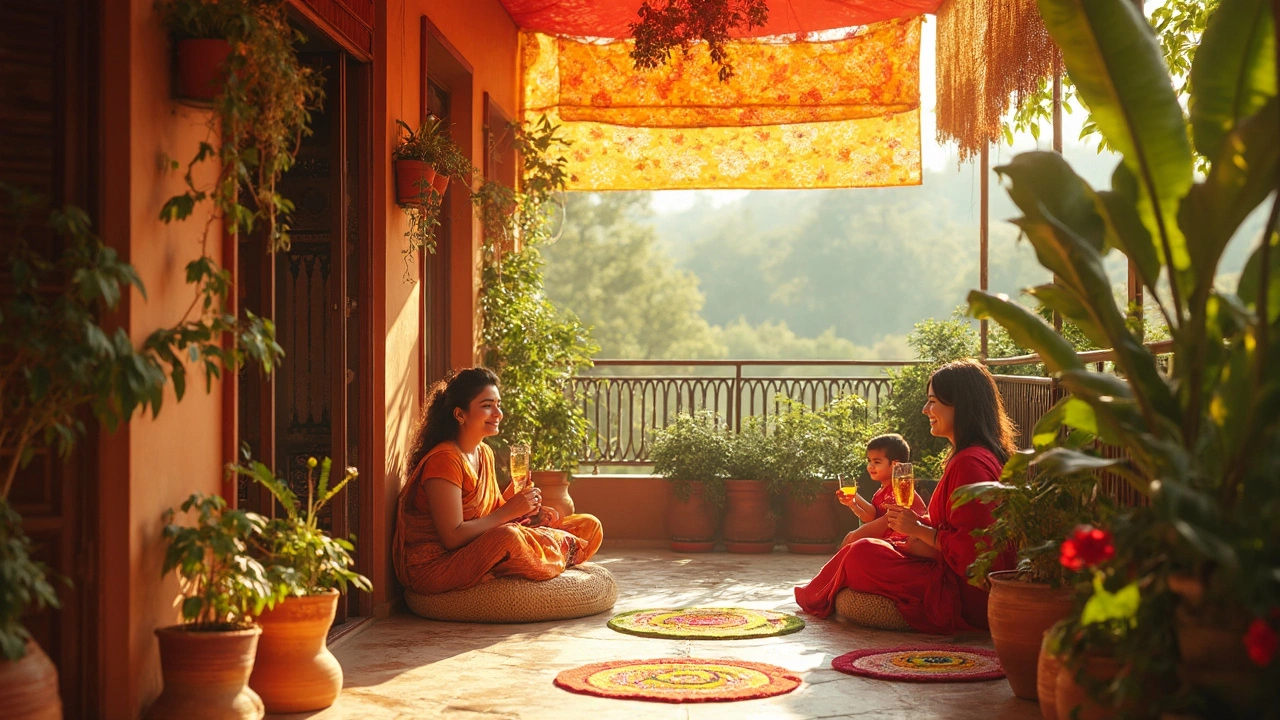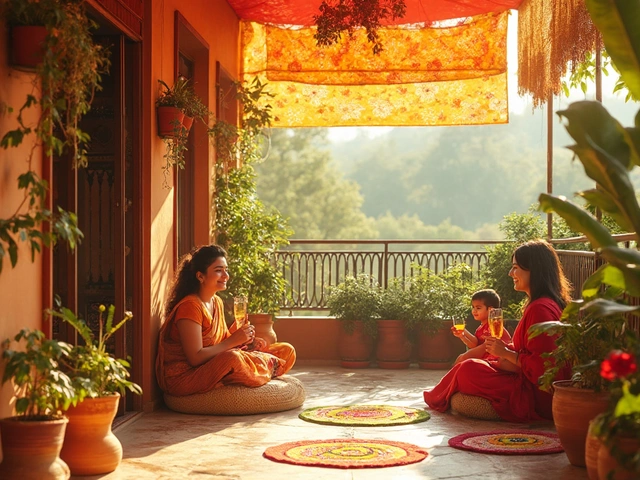You know that feeling when you step out onto your balcony and it hits you — a blast of stifling heat that makes you want to run right back inside. During summer, balconies can act like mini ovens, soaking up sunlight from morning till evening. It almost feels unfair that the very place you escape to for a breath of fresh air turns into the last place you want to be. Here’s the thing: you don’t have to give up on your balcony when the temperature soars. There are clever ways to fight back and reclaim your favorite spot, no matter how relentless the sun gets.
Understanding Why Balconies Get So Hot
Most balconies are basically exposed perches, soaking in direct sunlight and radiating heat from every angle. Concrete, brick, stone, and tile – these building materials are champion heat absorbers. They take in the sun’s rays all day and slowly release it, turning your balcony into a heat trap even after the sun goes down. According to the Department of Energy, surfaces like concrete and brick can reach up to 150°F on a scorching summer day. Glass railings also act like magnifying glasses, intensifying the sun’s power with every reflected ray.
But it’s not just the materials. The angle of sunlight matters, too. South-facing balconies bear the brunt of midday sun, while west-facing ones turn blazing hot in the late afternoon. If you have a lot of metal railings or furniture, expect them to hold onto the heat even longer. The lack of shade or airflow – just plain stifling. Heat lingers because most balconies are shielded on three sides, almost like a greenhouse.
It’s easy to blame the weather alone, but apartments perched higher up tend to get even hotter. Hot air rises, and winds are less likely to cool you down when buildings block natural breezes. Urban balconies in particular can suffer from the “urban heat island” effect – a real phenomenon where cities record temperatures up to 7°F hotter than nearby rural areas, according to the EPA. Balconies can act as mini heat islands, stuck in a hot zone of concrete and glass. Meanwhile, indoor AC units merely push out more hot air onto those very balconies, making the problem worse unless you manage that overflow.
Even finishing touches like outdoor rugs or artificial grass can make things worse if they’re not the right material. Dark colors and synthetic fabrics soak up heat, adding to the misery. And then there’s humidity. If you’re in a humid area, the air feels even heavier, and your sweat can’t do its job. That’s why a sweaty balcony in Miami can feel ten times worse than a hot one in Denver.
But here’s the good news: all these suntraps and heat magnets can be outsmarted. You just need a mix of shade, airflow, the right furnishings, and a little DIY spirit.

Smart Ways to Reduce Heat on Your Balcony
The real magic happens when you combine a few solid strategies: shading, increasing ventilation, cooling devices, and smart design choices. Let’s start by talking shade. Simply put, blocking the sun is priority one if you want a cool balcony. The simplest fix? Use a patio umbrella or a cantilevered umbrella you can adjust as the sun moves. Get one with UV protection, since lighter fabrics reflect more sunlight and keep things cooler underneath. For renters, this is a non-permanent solution that makes a big difference.
If your balcony faces a particular direction, think about a retractable awning or shade sail. Shade sails clip into place and can be customized for odd-shaped balconies. Look for a high-density polyethylene sail with at least 90% UV blockage. They last through storms and don’t sag when wet. Many people opt for privacy screens made of bamboo, reed, or canvas – they not only keep onlookers out but also block intense sun, especially on railings where heat builds up fast. You can even hang up blackout outdoor curtains along one or two sides to create instant relief during the hottest part of the day. Just slide them over when you need some shade or privacy.
Let’s talk about plants. Greenery acts like nature’s air conditioner. Tall potted plants, especially ones with broad leaves like banana or monstera, create their own shade microclimate. A row of potted bamboo or a vertical planter with trailing vines can reduce air temperature and humidity on your balcony by several degrees. According to a 2022 study from the University of Tokyo, leafy shade from balcony plants can lower the ambient temperature by up to 6°F. Choose reflective planters in light colors to keep the reflected heat low. If you’re brave enough, consider a small trellis with climbing plants such as jasmine or morning glory – they grow fast, look beautiful, and make you feel as if you’ve upgraded to a secret garden.
Next up: airflow. On stuffy balconies, the air just hangs there. A wall-mounted oscillating fan or a cordless outdoor fan can make a huge difference. Many modern fans are waterproof and come with rechargeable batteries, so you don’t even need an outdoor power outlet. Face them to pull cool air in rather than just push hot air around. If your balcony has room, install a small ceiling fan or a fan with misting capabilities. Misting fans cool the air by several degrees, and you can turn them off when guests step outside to avoid getting sprayed. For DIY lovers, use a bowl of ice in front of a fan to mimic a low-tech AC. The air blows across the ice and instantly feels cooler.
Another underrated fix: reflective window film or exterior solar shades for the doors and windows leading to your balcony. These cut heat transfer by blocking infrared rays, which make up over 50% of heat energy from sunlight. A bonus? They also reduce indoor cooling bills. If privacy isn’t a concern, swap out dark flooring for lighter tiles, wood, or even an outdoor rug in pale colors. Lighter surfaces reflect sunlight instead of storing it up for hours.
Speaking of surfaces, avoid covering your balcony with thick carpets or dark mats. Not only will they bake in the sun, but they’ll release that heat back up at your feet even after sunset. Stick to outdoor rugs made from woven polypropylene. They’re affordable, lightweight, and the air flows through them. If you’re tempted by artificial turf, make sure it’s heat-resistant and UV-stabilized. Some brands include a cooling layer beneath the blades, which reduces surface temperatures by up to 30% versus regular turf, as shown in recent product tests from Consumer Reports.
Furniture choice matters, too. Metal benches or tables? Those turn into sizzling grill racks after an hour in the sun. Opt for wood, rattan, or plastic, and choose furniture with open slats or gaps, which lets air move through. For serious lounging, summer hammock chairs or mesh outdoor seats are a lifesaver since they hold less heat than dense cushions. Before you write off cushions entirely, try covers in cool, light colors and make sure they’re labeled UV-resistant.
| Method | Estimated Temperature Reduction |
|---|---|
| Umbrella / Shade Sail | 5-15°F |
| Outdoor Fan | 3-7°F |
| Misting Device | 5-12°F |
| Plant Shading | up to 6°F |
| Lighter Flooring | up to 8°F |
If you’ve got a bigger budget and a balcony that allows for changes, check out retractable pergolas or install an overhead canopy. Some high-rise apartments now offer semi-permanent awning options that clamp onto balcony railings. Always check with your building management first.
For a quick checklist of heat-busting solutions, consider this:
- Layer shade: umbrellas, curtains, or awnings
- Go green: pots, vertical planters, or vines
- Boost airflow: fans or misting devices
- Switch to light/reflective surfaces
- Upgrade to heat-resistant outdoor furnishings

Extra Cooling Tricks and Low-Budget Fixes
Sometimes, it feels like every solution comes with a price tag. But cooling a hot balcony doesn’t have to be expensive or complicated. Many renters and budget-conscious homeowners have figured out fun, cost-effective ways to stay comfortable. Here are a few tricks that actually work.
First off, repurpose what you already own. Old bedsheets or shower curtains can become instant shade cloths if you don’t want to invest in pricey screens or sails. Use zip ties, command hooks, or bungee cords to secure these makeshift shades in place. If you’re worried about wind, clip on a few curtain weights (or tie some small stones to the hem) so your DIY sunblock stays put during gusty afternoons.
Next, the water trick: place shallow trays or buckets of water around the balcony edge. As the sun heats the trays, the water evaporates and cools the air a bit—a process called evaporative cooling. It won’t rival a misting system, but you’ll notice a subtle difference, especially with a breeze. For a playful touch, fill a kiddie pool with cold water and dangle your feet, or turn on a small tabletop fountain to keep air moving and moist.
Night cooling is another hack most people overlook. Open your balcony doors as soon as the sun sets and let the cooler evening air inside. Hang up your sun-blocking curtains or move potted plants to shade the hottest spots overnight—this helps reset the temperature for the next day. If your climate allows, soak your outdoor rug or balcony floor with water at dusk. As it evaporates, it takes some heat away from the concrete or tiles. Just don’t do this if mosquitoes are a problem in your area.
Some folks in Eastern Europe and the Mediterranean use reflective window shades—mirror-like foil window covers—on glass doors facing the balcony. While not the prettiest solution, they can cut heat transfer by up to 50%, according to tests by the U.S. Department of Energy.
If you’re crafty, create a homemade screen from old lattice panels or pallets and drape climbing plants across them. This adds shade, privacy, and charm without major investment. Another overlooked trick: repositioning furniture as the sun moves, always aiming for shadier corners. Try rolling carts or foldable tables to make switching things up easier.
And don't forget water bottles. Keep a mini-cooler or insulated jug stocked with ice water on the balcony. Thirst can sneak up on you when it’s hot outside, and having cold drinks within reach will help your body regulate its own temperature as well. Place cold packs behind your neck or ankles for a quick personal cooldown while relaxing in your outdoor space.
Even your choice of decorations can help. Hang up a string of paper or cloth lanterns in pale colors, which double as shade and ambience without heating things up. Avoid anything metal that’ll store heat or reflect intense sunlight onto your seating.
Lastly, timing matters. If you love reading or sipping coffee outside, aim for early mornings or late evenings when the sun is lower. You’ll find the temperature dramatically cooler, and it becomes part of your summer ritual rather than a battle against the elements.
There’s no single secret to cooling a hot balcony—it’s a mix of clever choices, simple science, and sometimes a little bit of trial and error. But with the right tweaks, you’ll have a balcony that’s not just bearable, but actually inviting. Don’t let the heat win. Who says you can’t enjoy your outdoor space, even when the city around you feels like a giant toaster?


